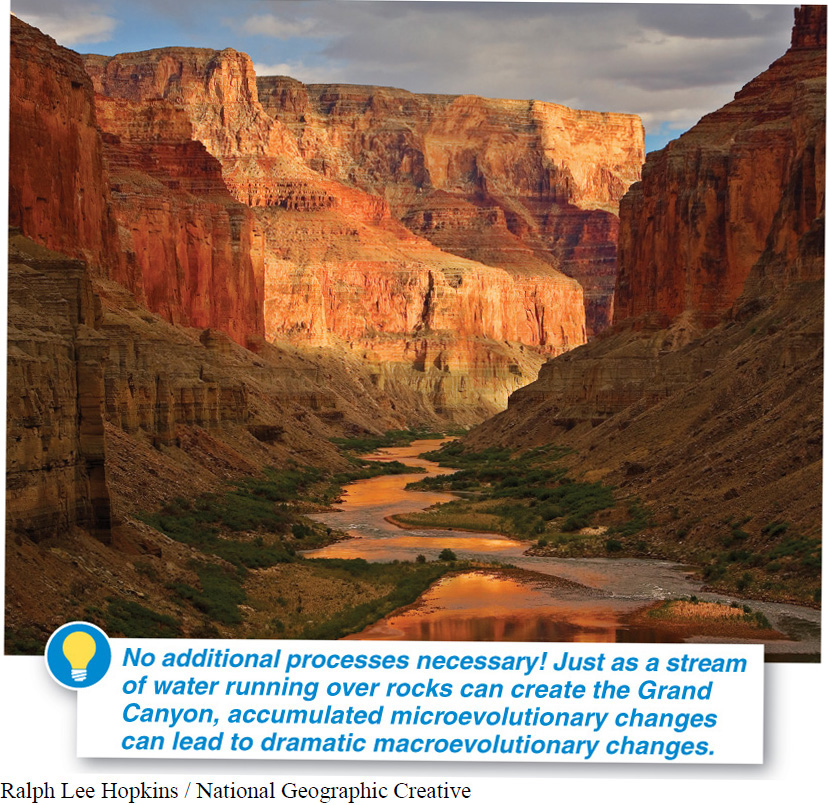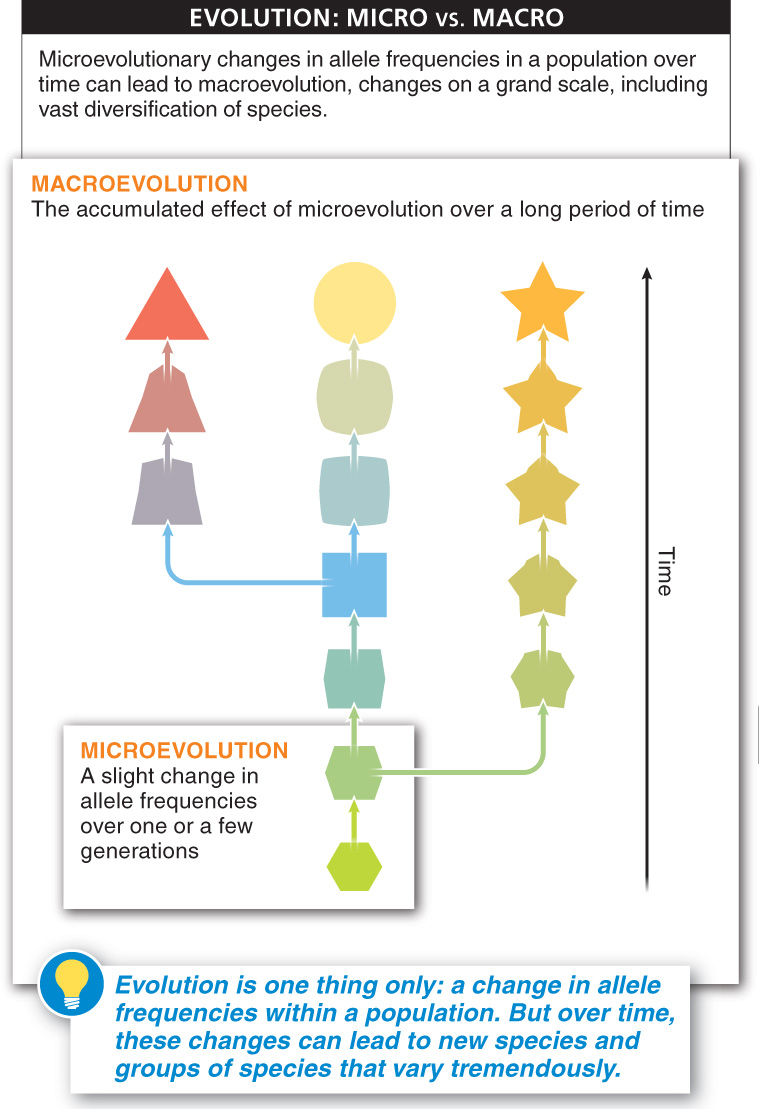
When water runs over rocks, it wears them away. The process is simple and slow, yet powerful enough to have created the Grand Canyon. To be sure, water running over rocks does not always make a Grand Canyon. Nonetheless, no additional physical processes are necessary. The process of evolution has a lot in common with a stream of water running over rocks: in the short term, it produces small changes in a population, yet the accumulation of these changes over the long term can be “canyonesque” (FIGURE 10-21). Let’s consider some examples.

The production of 200-

427
These micro and macro events might seem like two very different processes, but they are not. Evolution, whether at the micro or macro level, is one thing only: a change in allele frequencies over time. In the short term, over one or a few generations, evolution can appear as a slight and gradual change within a species. But over a longer period of time, the accumulated effects, acting continuously and combined with reproductive isolation of populations, can lead to the dramatic phenomena described as macroevolution. Just as a trickle of water, given enough time, produced the Grand Canyon, so evolution has created the endless forms of diversity on earth. In a sense, microevolution is the process and macroevolution is the result.
TAKE-HOME MESSAGE 10.11
The process of evolution—
Microevolution refers to evolutionary changes within a species, while macroevolution refers to larger-
Macroevolution is simply the extension of microevolution over a greater span of time.